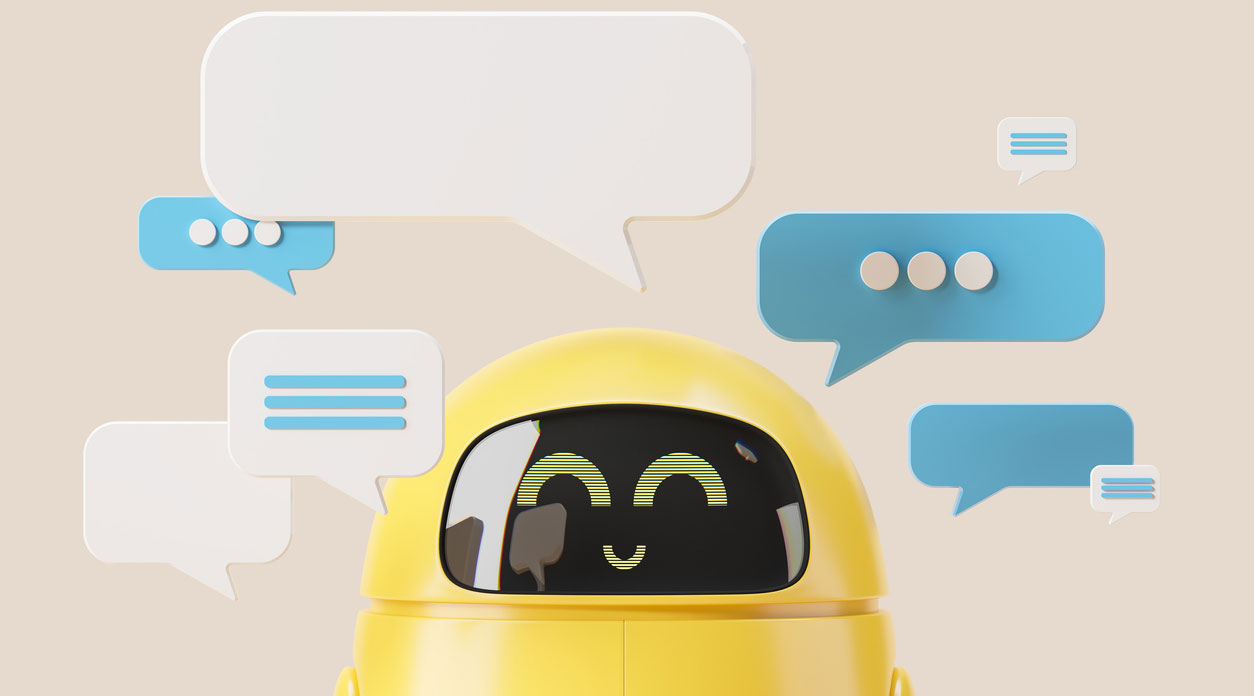Artificial intelligence is creating a revolution. Nowhere is this more obvious than in content creation and the world of tech. However, sales aren’t far behind. Customer service, in particular, is reaping the benefits of AI more than most branches of business. This versatile and engaging solution is proving a game-changer in streamlining operations and improving end-to-end experience.
If you’re reading this, chances are you’d like to adopt some customer-centric strategies and develop a forward-looking enterprise. AI chatbots in customer service are the obvious answer. This, however, doesn’t mean you should do away with your entire customer care team.
We’ll explain the best ways to leverage AI — and the gaps that remain that only qualified professionals can fill.
AI chatbots in customer service, a historic overview
Oh, you thought this stuff was brand new? Not by a long shot. Customer service chatbots first emerged in the 1960s in the form of automated response mechanisms. Such systems could provide information or guide certain operations over the phone. This was further enriched by the inclusion of interactive voice response (IVR) systems. We may as well call them proto-chatbots.
In the 1990s, rule-based chatbots and automated assistants were already a thing. These tools had predefined sets of rules and responses that covered the most frequent requests. Naturally, this provided them with a limited scope of action, though they still served as a way to help with the simplest of queries.
All that changed with the coming of the new millennium, especially in the last decade, when we began seeing the advent of natural language processing (NLP) and machine learning (ML). We now have assistants like Alexa and Siri who can understand and interpret input and offer meaningful responses. That led to the development of solutions like ChatGPT and AI chatbots that are quickly becoming popular for customer service on many major websites.
What chatbots can do to boost your business?
It seems that AI is becoming more human-like with each passing day. This enables it to offer a nearly full range of customer care functions. But before you launch yourself to overhaul all your operations in favor of machines, let’s see what AI chatbots in customer service actually can and can’t do.
1. Quick and accurate responses
One thing AI has in spades is speed. It’s able to offer instant support, even before your (human) customer care assistant is able to tune in. It’s a great way to keep the client engaged and collect some general information about the issue at hand. Routine queries and FAQs are fully handled by AI. More advanced chatbots are even able to determine the urgency of each matter to prioritize and escalate cases if needed.
2. Personalized sales
The above may sound a bit generic and impersonal. The new breed of AI is anything but. In fact, AI can analyze behavior, learn about the user’s preferences, and offer tailor-made recommendations. Machine learning enhances the experience in meaningful ways, creating proactive customer engagement.
In addition, chatbots can also help with lead generation, qualification, and conversion into sales by building stronger relationships with your customer base. Nowadays, you can even integrate your own AI platform with standard messaging apps like WhatsApp or Skype.
3. Automation
Placing orders and tracking parcels doesn’t have to involve multiple websites and fillable forms. The shopping of the future is likely to take the form of a casual conversation. This may sound counterintuitive at first but could end up being the more natural approach. It’s automation and integration of every step of the journey. More importantly, it frees your top sales talent from mundane tasks, allowing them to focus on pursuing promising leads and closing deals.
This can work not only with products but also with services. Healthcare providers, in particular, can rely on AI for automated appointment scheduling and organizing follow-ups. Oh, and let’s not forget real-time availability updates and reminders.
4. Language is no longer an obstacle
The beauty of AI is that it’s available in just about any language known to man. Natural language processing (NLP) is the subdiscipline of AI which has experienced tremendous progress in recent years. Its multi-language support will allow you to penetrate all markets and easily address a more diverse customer base.
5. Feedback, analytics, and resulting insights
All this business of machines interacting with customers is actually a good way to collect feedback in a conversational manner. It lets AI perform surveys, gather info, and allow for improvement through a continuous influx of valuable data. Analytics can rely on insights through chat logs, creating a strong foundation for data-driven decision-making. This can also give your enterprise a chance to refine the way in which you commercialize your products or services.
6. Training the team (and the users)
The use of AI chatbots in customer service isn’t only meant to answer complaints and resolve issues. It’s also a great way to mitigate problems before they arise. AI can offer interactive tutorials to your clientele. These endlessly patient chatbots offer real-time guidance and let your customers get the most out of your products or services. On the other end, AI can also educate your own team members, offering a platform for continuous training.
Where chatbots (still) fail
So does all this mean that AI chatbots in customer service are the next big thing and we can do away with professionals altogether? Nothing could be further from the truth. Artificial intelligence may have progressed leaps and bounds but it’s still a far cry from real human interactions. So which are the gaps that remain?
1. Quality assurance (QA)
Regardless of its complexity, you can’t exactly leave artificial intelligence to do its own thing. No human oversight is a recipe for trouble. The bots won’t take over your company but they can still leave the user frustrated. After all, machines do make mistakes and can provide the customer with wrong solutions. This is where quality assurance (QA) agents come into play. They can oversee automation and make sure it’s used properly — when and where needed.
2. Installation and maintenance
Many managers initially believe that AI is the most economical option that’ll help them save some serious money on the payroll. This, however, isn’t always the case. New tech can be quite costly to install, especially when it comes to more advanced AI chatbots in customer service. Maintenance is another issue, especially since the frequent analysis of interactions and suitable optimization is a ‘must’.
3. Empathy
As its name implies, AI is an artificial product. It has no feelings or emotions of its own and therefore lacks natural intuition, empathy, and the ability to improvise. Misspellings, slang, sarcasm, and an unexpected turn of phrase will likely fly over its virtual head. Worse still, they can create misunderstandings and even a digital hiccup that will slow down the service.
Furthermore, the sometimes obvious lack of emotion can frustrate the user. After all, most will contact customer care expecting their inquiry to be met with a dose of empathy. AI is notoriously unable to handle angry customers in a subtle manner. This can generate a bad experience and, further down the line, a fall in revenue.
What’s next?
We won’t pretend to know what the future holds, especially when it comes to rapidly developing technology. Still, we can touch upon a few directions the AI chatbots in customer service may take in the years to come.
- Artificial empathy is in the works but the chances remain slim. Sentiment analysis capabilities and emotional intelligence remain elusive.
- Hyper-personalization, on the other hand, is just around the corner. Predictive support based on historical interaction will ultimately deepen customer loyalty.
- The introduction of increasingly seamless integration across different touchpoints is also a realistic scenario. Do your users start their chat on your website but wish to continue on Instagram? Perfectly possible.
The human touch
AI is bringing momentous change to sales trends and customer care. It already offers incredible opportunities. We’re talking about greater speed, personalization, automation, multi-language support, analytics, and training capabilities. As great as this all may sound, AI won’t fit every business model. Consider your target audience before investing.
Very often, a hybrid solution will be the best. Collaboration with quality assurance professionals and customer care agents remains necessary. Leveraging each other’s strengths, the human and the machine can streamline automation yet still retain the empathy innate to our kind.



